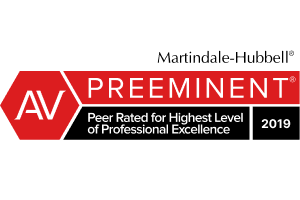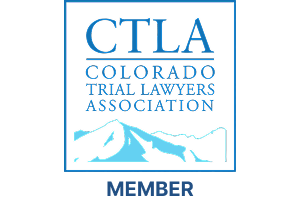Tire Blowout Truck Accidents
A highway run can turn into chaos in an instant when a commercial truck loses a tire. A steer tire failure yanks the tractor toward the blown side, robs the driver of clean steering input, and invites a lateral slide while the trailer keeps pushing. A drive or trailer tire failure throws debris into surrounding lanes, shifts traction unevenly, and can start a skid, jackknife, or rollover. Drivers around the truck have almost no time to react, which is why tire cases are about physics, maintenance culture, and how quickly the truth is preserved. Cook Bradford & Levy, led by trial lawyers Jason Levy and Brian Bradford, treats these crashes as urgent investigations. We secure the equipment, gather the data, and build a trial ready record that answers how and why the failure happened.
Why Truck Tires Fail in Real Life
Tire blowouts are rarely random. Most start quietly, then unravel. Underinflation builds heat in the sidewalls and shoulders, weakens cords, and sets up a later rupture. Overloading and poor weight distribution force a hot casing to flex more than it should. Worn or mismatched tread changes handling, exposes plies, and accelerates fatigue. Impacts from potholes and curb strikes break cords or belts that later unzip under highway load. Long summer grades, heavy trailers, and sustained speed are the final stress test.
Equipment related heat sources matter too. A dragging brake, a tight bearing, or a failing hub can raise temperatures at one corner. Heat migrates into the wheel end, into the rim, and finally into the tire, where it accelerates damage. Trailer inflation systems keep pressure up, but they cannot repair a torn stem or a puncture that bleeds air faster than the system can supply it. Pressure monitoring can warn of a slow leak, but only if the system is installed, functional, and treated as a stop now warning instead of a suggestion. When heat, stress, and time combine, the casing gives up.
Rules That Set The Safety Floor
Tire condition and use under federal law
Federal Motor Carrier Safety Regulation 393.75 addresses what is acceptable on the road. Tires must meet minimum tread depth, must be free of cuts that expose plies or belts, and must not show sidewall bulges or other structural damage. Using retreaded tires on a steering axle is improper on a truck, because a steer blowout is uniquely dangerous. The regulation also expects proper inflation and prohibits operation on known defective tires. In a blowout case, the failed tire and its mate are measured against these specific standards.
Systematic inspection and maintenance
Part 396 requires motor carriers to maintain vehicles in safe operating condition. That includes tires, rims, valves, and wheel end components such as bearings and hubs. Drivers are expected to perform pre trip inspections and to operate only when satisfied the vehicle is safe. The best programs go further by checking hub and tire temperatures early in a trip, then periodically, because heat is the easiest early indicator of a developing failure. Maintenance files, inspection sheets, and work orders tell a story about whether a company checked boxes or truly protected the public.
Driver judgment in hazardous conditions
Section 392.14 requires extreme caution when traction or visibility is poor, and it directs drivers to reduce speed or stop when conditions become dangerous. A sudden mountain storm changes road friction and tire temperatures. Winter patches of ice invite abrupt steering inputs that can tear a weakened casing. The rule is simple and practical. Slow down, create margin, and do not push a marginal tire through bad conditions.
Attention, fatigue, and missed warnings
Fatigue and distraction do not cause the rubber to tear, yet they explain why obvious signs get missed. A vibration in the wheel, a low pressure indicator, a smell of hot brakes, or a hub too warm to touch all signal a stop and inspect decision. Hours of service limits and the ban on handheld phone use exist to keep professional drivers alert enough to act on those signals. When the minutes before a crash show warnings that were ignored, jurors understand why federal rules are specific.
How a Failure Becomes a Crash Sequence
A steer blowout changes geometry immediately. The rim collapses relative to the tread, the tractor dives toward the failed side, and yaw forces rise. The correct first move is to hold a steady grip, ease off the throttle, and keep the rig straight while speed drops. Stabbing the brakes pitches weight forward onto the failed corner and can make the yaw worse. If the failure occurs in a curve or during a lane change, lateral load increases the chance of a jackknife or roll.
Drive or trailer failures produce different dynamics. Fragments of tread or belt can strike trailing vehicles with serious energy. If multiple tires fail on one side, the rolling radius drops on that side and can start a skid. A steel belted sidewall can unzip into sharp strips that damage air lines or wiring, creating a chain of failures. Trailer inflation systems may hold pressure long enough to delay the visible failure, which is why timing and path of travel in the minutes before the event are part of every careful reconstruction.
How Cook Bradford & Levy Builds Blowout Cases
Lock the evidence down, then look for heat
Our first task is to stop the loss of proof. We send preservation notices to the motor carrier, the driver, any maintenance provider, and any shipper whose load or schedule may matter. We secure the tractor and trailer before salvage or repairs. We retain neutral facilities where necessary so every party can inspect the components under controlled conditions.
We collect the failed tire, the mate tire on the same axle, the rim, stem and core, hub and bearings, brake components, and any inflation or pressure monitoring hardware. We photograph tread, sidewalls, beads, and belt edges. We document DOT codes and dates, retread tags, and past repair markers. We gather police files, scene photos, and witness statements. We canvass nearby businesses and agencies for video that may show smoke, sparks, sway, or debris. Because many cameras overwrite within days, speed is essential.
Combine electronics, records, and residue
We download engine control module data and fleet telematics that capture speed, throttle, brake input, and lateral acceleration. If pressure monitoring or automatic inflation systems were installed, we request pressure histories and fault logs. Roadside inspections and maintenance files for months leading up to the event are collected, indexed, and compared to the physical evidence. Infrared images taken shortly after a crash, when available, can reveal residual heat patterns on hubs and wheels, which helps distinguish heat from underinflation versus a sudden impact cut.
Use the right experts for the specific failure mode
We retain tire failure analysts to section the tire and examine belt edges under magnification. They look for oxidation, ply stretch, cord pullout, rubber reversion, and other features that differentiate chronic underinflation from impact breaks and manufacturing irregularities. Mechanical engineers evaluate wheel end parts, including bearings, seals, and brake hardware, and determine whether a dragging brake or failing hub generated heat. Accident reconstructionists analyze yaw marks, scuffs, and debris fields to quantify speeds and forces and to model the sequence from failure to loss of control. Human factors experts explain what a professional driver should have noticed and what an appropriate response looks like.
Translate rules into choices a jury can evaluate
We explain federal and state requirements in plain language. The carrier had to keep the vehicle in safe condition. The driver had to be satisfied that it was safe to operate and had to treat warnings as stop now conditions. The fleet had to train on blowout response and supply simple tools like quality pressure gauges and tread depth measurers. When the facts support a product claim, we describe how a safer design or a defect free manufacture would have prevented the failure or reduced its consequences.
Prepare like trial is tomorrow
Settlement leverage comes from proof, not adjectives. We present component photographs, expert reports, maintenance histories, and a clear, time stamped narrative that shows how preventable choices led to a catastrophic result. If fair resolution does not follow, we file suit and push focused discovery, including design and test documents when a product claim is present and safety and telematics records when maintenance or driver response is at issue.
Typical Defenses, and How We Answer Them
Some carriers claim the failure was an unavoidable road hazard. Sometimes that is true. Many times it is not. Sectioning and microscopy reveal whether the belts separated from heat and oxidation or whether a sharp puncture caused a clean cut. The patterns do not lie.
Others say the driver did everything right. A trained professional recognizes and acts on a steering shimmy, a low pressure warning, a burning smell, or an abnormally hot hub. Electronic logs, camera frames, and witness statements show whether those warnings occurred and how the driver responded. If a fleet lacks working pressure monitoring or does not equip drivers with reliable gauges, claims of perfection ring hollow.
Defendants sometimes argue that a tire was old but legal. There is no federal age limit for truck tires, yet oxidation increases with age and heat cycles. Many safety focused fleets retire steer tires early for that reason. Leaving a weather cracked steer tire in service on a long, hot route may meet a minimal standard, but it is not reasonable safety.
Paper inspections are another refuge. A sticker proves very little if tread depths, sidewall conditions, and wheel end noises were not addressed. Work orders tell the truth about culture. If the same corner shows repeated low pressure or hot hub complaints, a paper pass is not protection.
Frequently asked questions
Is a blowout automatically the manufacturer’s fault?
No. A blowout can result from a defect in design or manufacture, but it can also stem from underinflation, overload, impact damage, or a wheel end failure. The answer comes from forensic work and data, not assumptions. We investigate both product and maintenance theories and follow the evidence.
Can carriers use retreaded tires?
Retreads are common on drive and trailer axles when properly manufactured and maintained. They should not be used on steering axles of trucks. Even on non steer positions, an underinflated, mismatched, or damaged retread can fail. Selection and maintenance are the keys.
What is the right driver response to a steer blowout?
Hold a firm grip, ease off the throttle, keep the combination straight, and wait to brake until speed has dropped and the rig is stable. Training and practice matter. Fleets should teach and reinforce the correct sequence so panic does not take over.
Does a recent inspection end the inquiry?
No. A fresh sticker does not answer whether the inspection was careful or whether known problems were fixed. We look behind the sticker at tread depths, sidewall condition, pressure records, wheel end repairs, and maintenance culture.
How long do I have to act in Colorado?
Colorado imposes deadlines that vary with claim type. Evidence in blowout cases is also fragile. Tire fragments get swept away, parts are discarded, and digital data can be overwritten quickly. Early legal action protects proof and rights.
We Uncover The Truth Behind Every Tire Blowout Truck Crash, Let Us Start Your Investigation Today
Tire blowout litigation blends engineering, human factors, and federal rules. It demands speed, technical fluency, and clear communication to jurors. Cook Bradford & Levy is built for that work. We lock down vehicles and components, secure electronic and paper records, bring in the right experts, and prepare every case for trial. That preparation drives fair settlements and ensures we are ready for court when justice requires it. We represent people, not insurance companies, and we keep clients informed from the first call to the final resolution. Our team serves families across Colorado from offices in Lafayette, Longmont, and Denver.
A truck tire does not fail without a cause. Heat, stress, neglect, and defects leave signatures that trained professionals can read. Our job is to preserve those signatures, explain what they mean, and hold every responsible party accountable. If you or a loved one was hurt or killed in a tire blowout truck crash, contact Cook Bradford & Levy. We will listen, investigate, and pursue the full measure of justice available under Colorado law.









